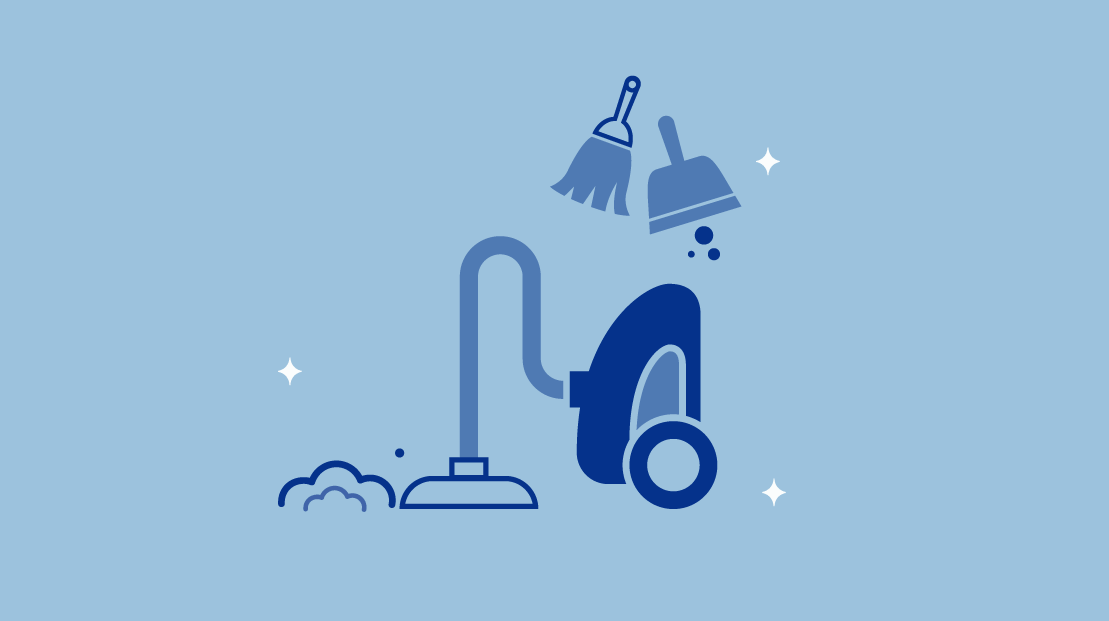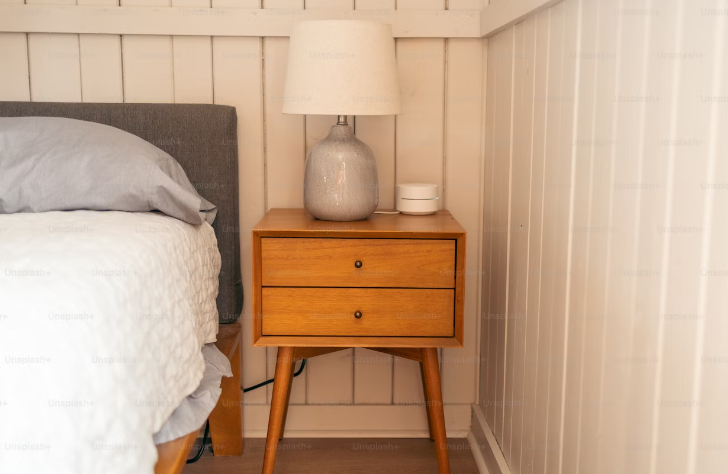Key Takeaways
- White Sheets Aesthetic: White bed sheets are favored by many due to their clean and clutter-free appearance, contributing to a more peaceful sleeping environment.
- Yellowing Cause: White sheets may develop a yellowish tinge over time due to the accumulation of body oils, sweat, and skincare products. Standard laundry detergent often struggles to remove these stains effectively.
- Whitening Methods: Several household items and techniques can help restore the whiteness of your sheets, including borax, vinegar, baking soda, lemon juice, hydrogen peroxide, liquid bluing, and even sunlight. Avoid using bleach as it can cause yellow spots.
Clean, white bed sheets are every sleeper’s dream. Many people prefer white sheets because they make the bedroom feel less cluttered, and you’re bound to get better sleep when snoozing in a clutter-free room.
But maintaining white sheets can be difficult. Light-colored sheets tend to get a yellowish tinge with time, making them look worn out and dingy. No one likes sleeping on shabby sheets, so we often find ourselves replacing them often.
In this article, we discuss how to make your sheets white again. With our simple tips, you can bring the sparkle back to your bedding and save yourself from having to buy a new sheet set.
Steps To Make Your Sheets White Again
Your white sheets start turning yellow with age and prolonged use. Accumulated sweat, body oil, lotion, and other skincare products cling to the fabric’s fibers, causing a yellowish tinge. And these things don’t get cleaned with the regular laundry detergent. But there are other ways to turn your yellow bed sheets white again.
Use a few simple household items before, during, or after washing with your regular laundry detergent to turn your sheets white. It’s best to wash sheets in hot water because the high temperature kills allergens. We recommend checking the instructions on the care label before washing and drying your sheets, though.
Borax
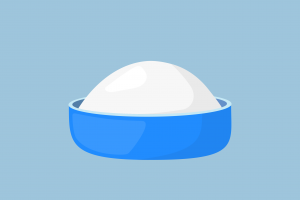 Borax is a powdery white mineral and a whitening laundry booster available in any grocery store. Add half a cup of Borax to one gallon of water and pre-soak your sheets in this solution overnight.
Borax is a powdery white mineral and a whitening laundry booster available in any grocery store. Add half a cup of Borax to one gallon of water and pre-soak your sheets in this solution overnight.
Prolonged exposure to a whitening laundry booster removes the yellow tinge from your white bed sheets. After they’ve been soaking, wash the sheets as usual with a mild detergent.
Vinegar
 Use vinegar to pre-soak your sheets before washing them. Mix half a cup of vinegar with one gallon of warm water in a tub or a big bucket. Soak your sheets in the solution for an hour. Then, machine wash or hand wash with a gentle detergent.
Use vinegar to pre-soak your sheets before washing them. Mix half a cup of vinegar with one gallon of warm water in a tub or a big bucket. Soak your sheets in the solution for an hour. Then, machine wash or hand wash with a gentle detergent.
However, before tossing your vinegar-soaked sheets in the washer, you may want to give them a few hours to air dry. Air drying your sheets eliminates any vinegar smell.
You can also add vinegar directly to the wash by pouring it into your machine’s fabric softener dispenser.
Baking Soda
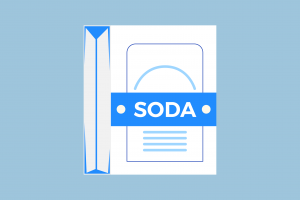 Baking soda is an odor neutralizer with natural whitening abilities. Add half a cup of baking soda to your regular laundry detergent for sparkling white sheets. Baking soda boosts the detergent’s cleaning power. It gives you clean white, odor-free bed sheets.
Baking soda is an odor neutralizer with natural whitening abilities. Add half a cup of baking soda to your regular laundry detergent for sparkling white sheets. Baking soda boosts the detergent’s cleaning power. It gives you clean white, odor-free bed sheets.
While it’s possible to combine some of these methods, such as using lemon juice in your washing machine after soaking the sheets in vinegar, you do not want to use baking soda and vinegar together. Mixing these two compounds isn’t dangerous, but the baking soda and vinegar will essentially cancel each other out.
Lemon Juice
 The citric acid in lemons is a natural bleaching agent. One method is to juice one lemon and pour this juice into your washing machine with your regular detergent for whiter sheets. If you pre-soak your sheets in vinegar before doing so, the citrusy fragrance will neutralize the lingering smell of vinegar.
The citric acid in lemons is a natural bleaching agent. One method is to juice one lemon and pour this juice into your washing machine with your regular detergent for whiter sheets. If you pre-soak your sheets in vinegar before doing so, the citrusy fragrance will neutralize the lingering smell of vinegar.
Another method is to mix half the lemon juice with a gallon of hot water, then leave your sheets soaking in the juice overnight. Remove the sheets and wash them as normal. As a side note, we cannot recommend this second method for anyone who wants to restore a set of silk sheets.
Hydrogen Peroxide
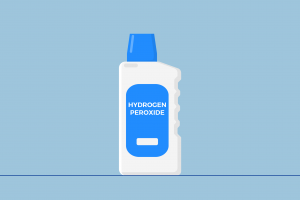 Another multipurpose household product you can try to whiten yellowed sheets is hydrogen peroxide. Aside from serving as a disinfectant, hydrogen peroxide also serves as a mild bleaching agent, and it can even be used to brighten colored sheets in the wash.
Another multipurpose household product you can try to whiten yellowed sheets is hydrogen peroxide. Aside from serving as a disinfectant, hydrogen peroxide also serves as a mild bleaching agent, and it can even be used to brighten colored sheets in the wash.
Add about a cup of hydrogen peroxide to your washing machine, along with your usual detergent. Then wash the sheets as you normally would.
Bleach
 Bleach is known for whitening everything. In fact, bleach even whitens your colored fabric if you accidentally spill some on it. You may be surprised to learn that using bleach to whiten your sheets actually has the opposite effect.
Bleach is known for whitening everything. In fact, bleach even whitens your colored fabric if you accidentally spill some on it. You may be surprised to learn that using bleach to whiten your sheets actually has the opposite effect.
Bleach contains chlorine. Chlorine chemically reacts with the proteins in our sweat and body oil, causing yellow spots to appear.
To use bleach for whitening your bed sheets, first, wash them with your regular laundry detergent. Washing eliminates traces of sweat and body oil. Once cleaned, add half a cup bleach to the drum and run a regular wash cycle to whiten your sheets.
Liquid Bluing
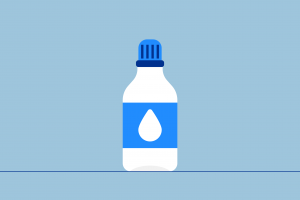 Liquid bluing counteracts the yellow shade, making your sheets bright white again. Manufacturers use bluing in the finishing process of white fabrics. But with every wash, the effect of bluing wears off.
Liquid bluing counteracts the yellow shade, making your sheets bright white again. Manufacturers use bluing in the finishing process of white fabrics. But with every wash, the effect of bluing wears off.
Restore the whitening effect by using liquid bluing available in any hardware or grocery store. Dilute the liquid bluing in cold water before using it on your sheets. Directly adding the liquid bluing to your sheets may stain the fabric. Carefully follow the diluting instructions written on the bottle. Diluting instructions may differ from brand to brand.
Usually, a quarter teaspoon of liquid bluing is mixed with one quart of water. This solution is poured over your sheets along with the detergent for a regular wash cycle. If using in the rinse cycle, stir in one-eighth of a teaspoon of liquid bluing into one quart of water.
Avoid using liquid bluing in your washer’s automatic dispenser. The bluing may stain it. Liquid bluing should not be used with bleach, fabric softener, or any other laundry products except laundry detergent. The other laundry products may react with liquid bluing, causing stains.
Line Dry in Sun
 Sunlight has natural bleaching properties. If possible, hang your white sheets on a clothesline to enhance the brightness of your white sheets.
Sunlight has natural bleaching properties. If possible, hang your white sheets on a clothesline to enhance the brightness of your white sheets.
However, don’t leave your sheets out in the sun for more than two to three hours. Excess heat may damage the fabric’s quality. It’s also important to keep an eye on the weather, as you don’t want to leave your drying bedding out to get caught in a sudden downpour.
What Causes Yellowed Sheets?
So why do sheets develop yellow stains over time? Simply put, body oils and fluids like sweat and skin oil soak into the fabric as you sleep and leave a residue. Even cosmetics like lotion and facial creams can cause yellowing. Washing the sheets can remove the oils that cause it, but the yellow stains still linger.
While you can minimize this yellowing by frequently washing your sheets and taking showers before bed, there’s simply no way to prevent it entirely from happening. That’s why it’s important to understand how you can whiten sheets to best remove every yellow dingy stain.
Consider Amerisleep Sheets
Quick Guide: A 30-Second Summary
| Best Cotton Sheets | Amerisleep Cotton Sheets |
| Best Tencel Sheets | Amerisleep Tencel Sheets |
| Best Bamboo Sheets | Amerisleep Bamboo Sheets |
Tips To Maintain Your White Bedding
Once you know the steps to make your dingy sheets white again, you’ll want to maintain their bright appearance. Use whitening strategies every time you wash your white bed sheets. Apart from that, follow a few basic steps to avoid build-up on your white bed sheets.
Wash Frequently
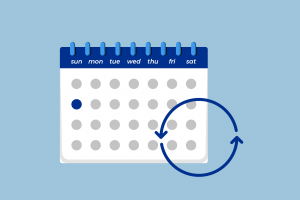 Even if you shower before bed, you still leave dead skin cells, hair, body oil, and maybe even sweat behind in your bed. Accumulated debris, moisture, and oil attract allergens such as dust mites, mold, bacteria, and fungi to your mattress. These allergens may trigger sneezing, a runny nose, sore throat, skin irritation, breathing difficulties, or other allergic symptoms, causing sleep disruptions.
Even if you shower before bed, you still leave dead skin cells, hair, body oil, and maybe even sweat behind in your bed. Accumulated debris, moisture, and oil attract allergens such as dust mites, mold, bacteria, and fungi to your mattress. These allergens may trigger sneezing, a runny nose, sore throat, skin irritation, breathing difficulties, or other allergic symptoms, causing sleep disruptions.
To avoid sleep disruptions, it’s best to wash your sheets at least once a week, and white bed sheets even more frequently. Wash white bed sheets once every four to five days to keep them sparkling white for a long time. Letting your bodily fluids linger in the sheets’ fibers increases the chances of yellow stains.
If you have the option of an extra rinse cycle in your machine, use it to remove any detergent residue from your sheets. Detergent residue builds up on your sheets, making them look shabby and discolored. Be careful about the detergent amount you use while washing your sheets. Excess detergent leaves a residue on the sheets. Follow the instructions written on the laundry detergent box to determine the appropriate amount required for washing your sheets.
Avoid Fabric Softeners
 Store-bought fabric softeners make the fabric feel comfortable and smell good. But these fabric softeners don’t rinse well, causing a chemical build-up on the fabric. This build-up prevents proper cleaning during the next wash cycles.
Store-bought fabric softeners make the fabric feel comfortable and smell good. But these fabric softeners don’t rinse well, causing a chemical build-up on the fabric. This build-up prevents proper cleaning during the next wash cycles.
Instead, use vinegar as a natural fabric softener. Depending on the load size, pour a half cup or 1 cup of distilled white vinegar directly into the fabric softener tray of your washing machine. Vinegar whitens your sheets and acts as an excellent fabric softener.
Launder Whites Separately
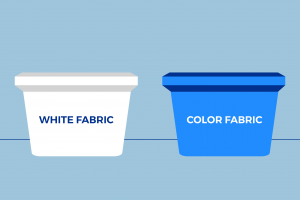 If you wash white fabric with another color, there’s a risk of color bleeding onto the white fabric. To avoid colored stains on your white bed sheets and bedding accessories, keep them separate from other colors during washing.
If you wash white fabric with another color, there’s a risk of color bleeding onto the white fabric. To avoid colored stains on your white bed sheets and bedding accessories, keep them separate from other colors during washing.
However, if you choose to wash your whites with light colors, use a cold water cycle. Hot water is more likely to release dyes and cause bleed-thorough on other clothes.
Wash Your Face at Bedtime
Wash your face at bedtime to prevent transferring dust, dirt, pollutants, or make-up to your bed sheets. Our skin absorbs a lot of dust and germs throughout the day. All these get passed onto our sheets if we don’t wash our face at bedtime.
Avoid Eating in Bed
Avoid eating in bed to reduce the chances of spills or stains. Removing stains completely from white bed sheets is difficult.
More Cleaning Guides for Bedding
For mattresses:
- How to Get Stains Off and Clean a Mattress
- How to Freshen and Deodorize a Mattress
- How to Remove Urine Stains and Smell From a Mattress
- How to Clean Vomit from a Mattress
- How to Remove Blood Stains on Your Mattress
- How to Get Poop Stains out of a Mattress
- How to Remove Coffee Stains from Your Mattress
- How to Remove Makeup Stains from Mattresses
- How to Remove Rust Stains on a Mattress
- How to Get Sweat Stains Out of a Mattress
- How to Get Lint Balls off a Mattress
- How to Clean a Dusty Mattress
- How to Fix a Ripped Mattress
- How to Dry a Wet Mattress After Water Damage
- How to Get Rid of Bed Bugs in a Mattress
For pillows:
- How to Wash and Dry All of Your Pillows
- How to Wash a Body Pillow
- How to Disinfect Your Pillow
- How to Fluff a Pillow
For sheets:
For blankets and other coverings:
- How to Clean a Comforter
- How Long Does It Take to Dry Clean a Comforter?
- How to Wash a Quilt
- How to Wash a Duvet
- How to Clean an Electric Blanket Safely
- How to Clean a Weighted Blanket
- How To Wash a Crochet Blanket
For other items of bedding:
- How Often Should You Wash Your Mattress Protector?
- How To Clean a Memory Foam Mattress Topper?
- How to Get Pet Hair Out of Bedding
Frequently Asked Questions
Can you use bleach on white sheets?
You can use bleach to whiten your sheets or spot-clean stains on your white sheets. But use bleach only on a washed white bed sheet. Your unwashed sheets have sweat and body oil traces on it. These body fluids contain protein. The chlorine in bleach reacts with this protein, leaving behind yellow patches. Wash your sheets to remove the protein traces. Then pour half a cup of bleach into your washing machine and run the sheets in a regular wash cycle.
Why do white bed sheets turn yellow?
White bed sheets turn yellow with age due to accumulated sweat and body oil. Regular machine washing them with detergent may not be enough to remove the build-up of sweat and oil. Sometimes detergent or fabric softener residue on your sheets hinders proper cleaning. Rinse sheets well and use whitening agents such as vinegar, baking soda, and lemon juice to make your sheets white again.
Should you wash sheets in hot or cold water?
You can wash white or light-colored cotton sheets in hot or warm water. The high water temperature kills allergens. We recommend checking instructions on the care label before washing your sheets. Instructions may vary depending on the fabric material.
How often should you wash your bed sheets?
Wash your white bed sheets even more frequently than other bed sheets, once every 4 or 5 days. Stains set fast in white bed sheets. Wash your sheets frequently and rinse well to prevent a yellow dingy cast on your white bed sheets.
Conclusion
White sheets start looking shabby after a couple of months. Whitening options prolong your white bed sheets’ lifespan by removing yellowing or discolored patches. Use a whitening option every time you wash your white sheets to make them look as good as new. With proper washing, rinsing, and whitening, your sheets can last as long as 4 to 5 years depending on the fabric quality.
About the author
April Mayer is a sleep expert and writer with a degree in exercise physiology. She has dedicated her career to exploring the relationship between sleep and productivity. Her insightful articles, such as "The Surprising Way Your Mood Might Be Messing With Your Productivity" and "Wake Up to More Productive Mornings," have been featured in reputable publications like Forbes, Greatist, Real Homes, Thrillist, Tom's Guide, and Eat This, Not That. With a passion for helping others lead more productive lives through restful sleep, April offers valuable expertise on foods and vitamins for better sleep. As a trusted member of the Early Bird team since March 2020, she continues to provide informative and well-researched content.
View all posts


